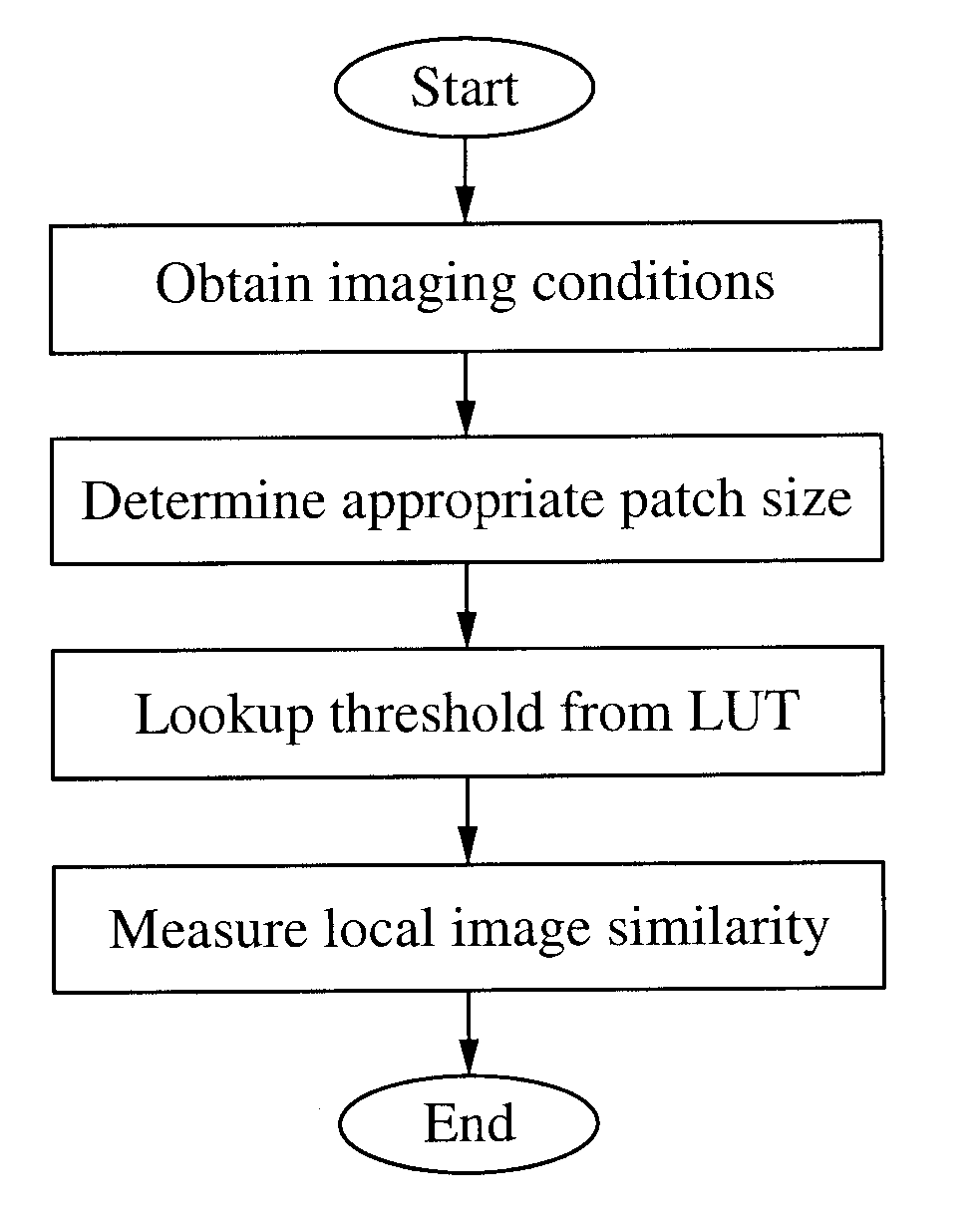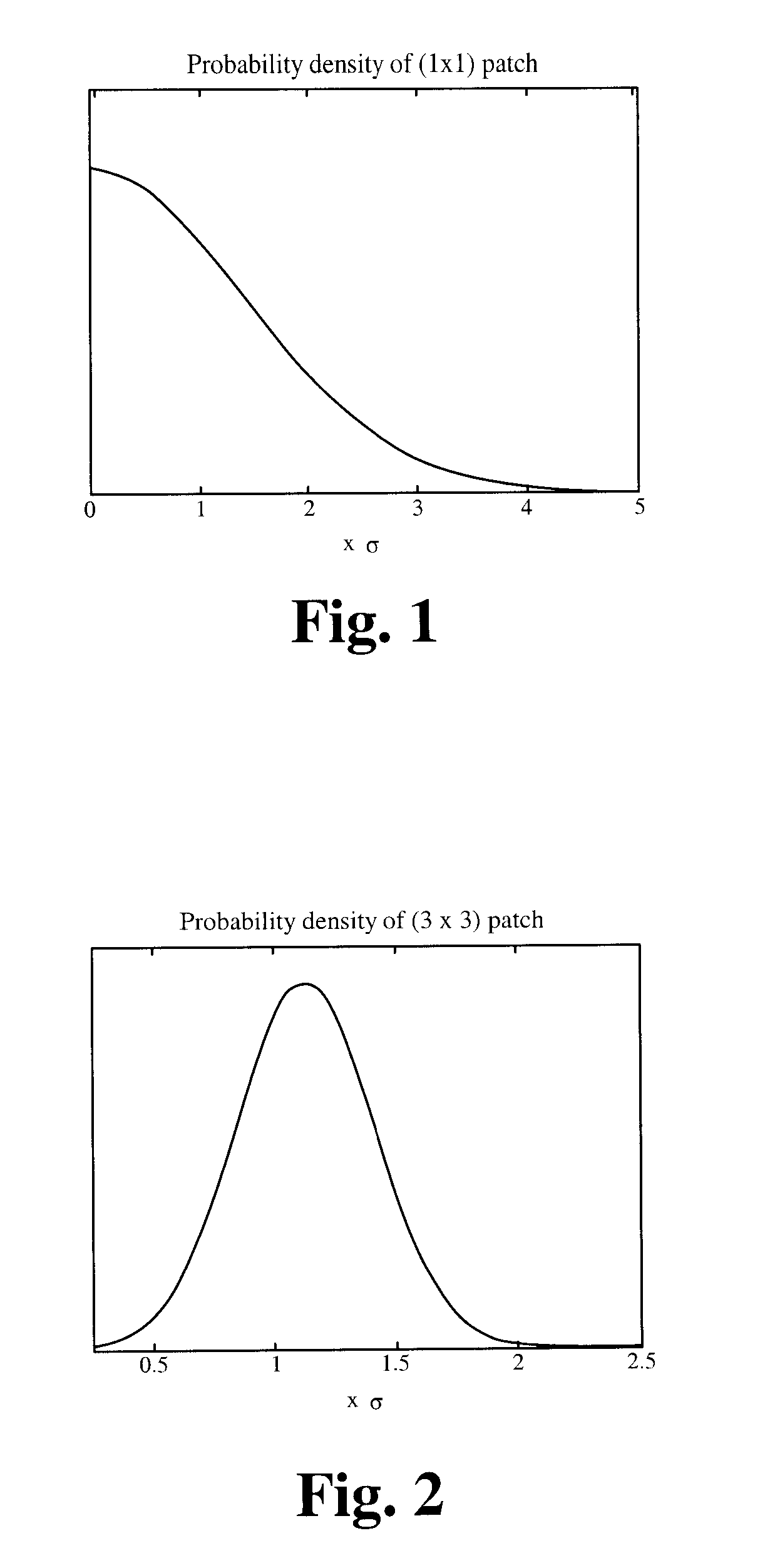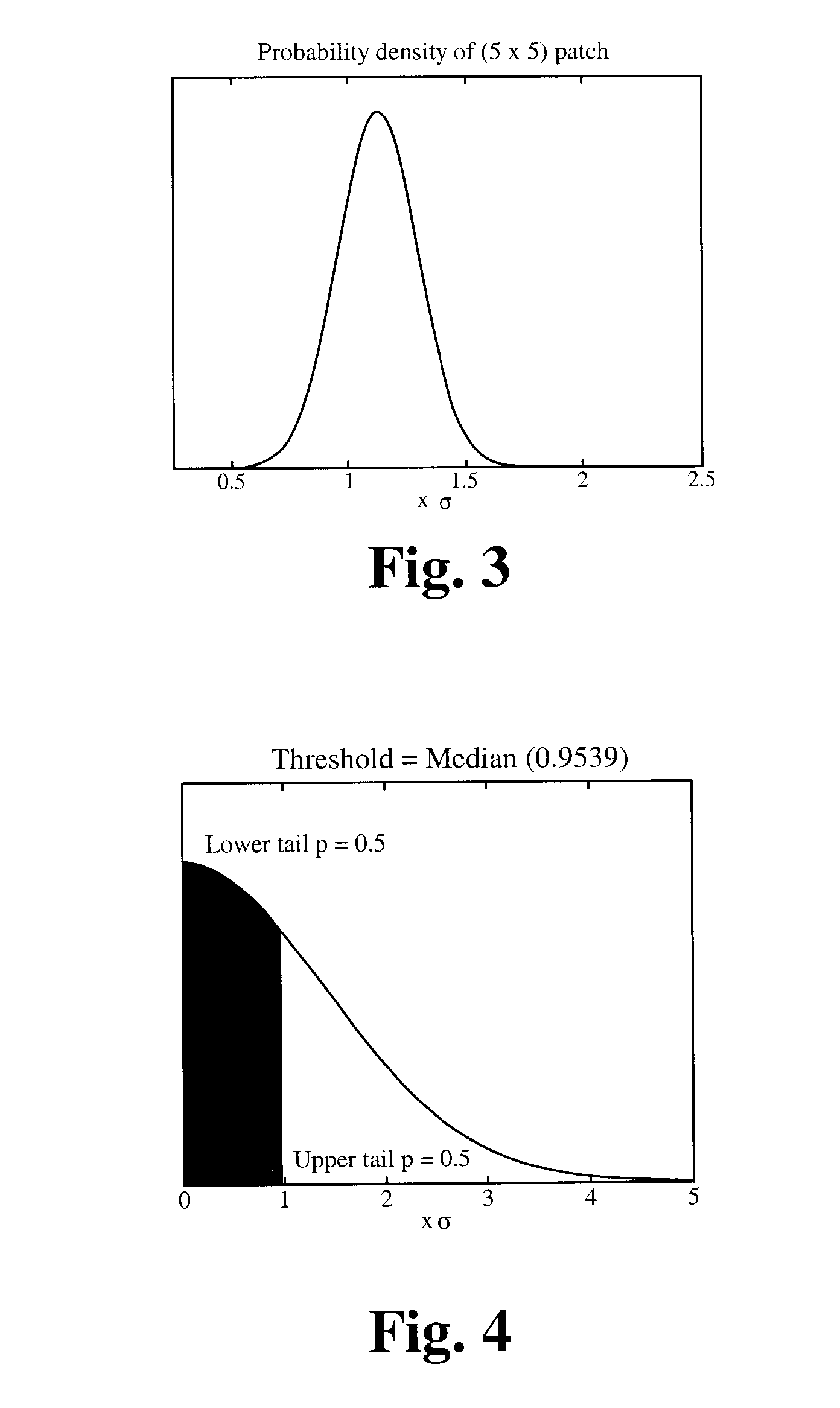Method to measure local image similarity based on the l1 distance measure
a distance measurement and local image technology, applied in the field of image processing, can solve the problems of denoising, finding similar image structures, and estimating local image similarity, and achieve the effect of the same similarity ra
- Summary
- Abstract
- Description
- Claims
- Application Information
AI Technical Summary
Benefits of technology
Problems solved by technology
Method used
Image
Examples
Embodiment Construction
[0021]The similarity measure used herein is based on the L1 distance as opposed to the popular L2 distance. There are several reasons for this choice. Natural images have heavy tailed distributions, and noise characteristics corrupting the image can be non-Gaussian. The L1 distance is more appropriate for such data since it is not as affected by outliers as L2 distance or other fractional distances as described by P. Howarth and S. Ruger in “Fractional distance measures for content-based image retrieval,” Lecture notes in computer science ISSN 0302-9743, Volume 3408, 2005, pp. 447-456, which is herein incorporated by reference. L1 distance gives all components the same weighting. Secondly, it is computationally much simpler to compute the absolute difference (L1 distance) as compared to the L2 distance (which even if the square root is discounted is still the sum of the squared difference).
[0022]FIG. 7 illustrates similarity measures for patch sizes 1×1 and 3×3. When patch size is 1...
PUM
 Login to View More
Login to View More Abstract
Description
Claims
Application Information
 Login to View More
Login to View More - R&D
- Intellectual Property
- Life Sciences
- Materials
- Tech Scout
- Unparalleled Data Quality
- Higher Quality Content
- 60% Fewer Hallucinations
Browse by: Latest US Patents, China's latest patents, Technical Efficacy Thesaurus, Application Domain, Technology Topic, Popular Technical Reports.
© 2025 PatSnap. All rights reserved.Legal|Privacy policy|Modern Slavery Act Transparency Statement|Sitemap|About US| Contact US: help@patsnap.com



